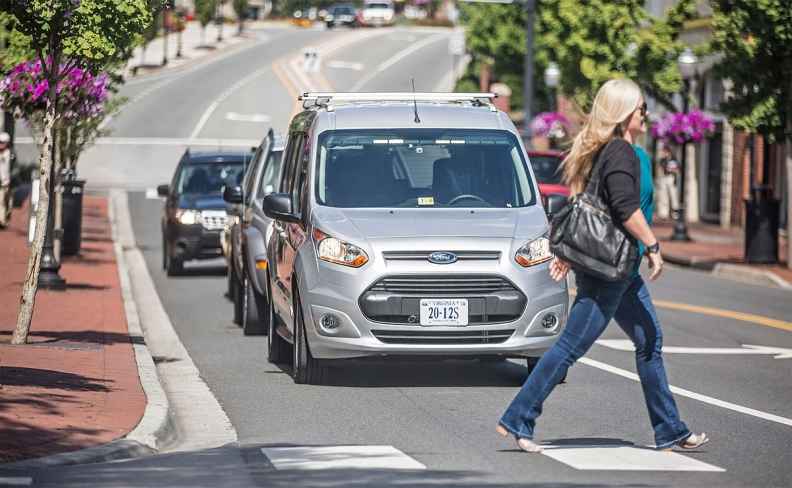WASHINGTON -- Ford Motor Co. has designed a light signal system for autonomous vehicles that company officials say helps solve the problem of self-driving cars safely interacting with pedestrians, bicyclists and human drivers.

Ford engineers said they hope tests results from real-world encounters will pave the way for standardization and industry-wide adoption.
“At Ford, we don’t see this type of feature as a competitive advantage, but something that’s necessary for society to accept these vehicles,” John Shutko, Ford’s human factors technical specialist, said in a briefing for reporters here.
The white light display, located at the top of the windshield, is designed to communicate intent to yield way or accelerate from a stop, which today is done through hand gestures, head nods and eye contact. The display’s color and location were chosen to comply with federal motor vehicle safety standards and not create confusion with other light signals on the vehicle, Shutko said.
The cue for yielding to a full stop is two white lights that move side to side. A rapidly blinking white light indicates the vehicle is beginning to accelerate from a stop and a solid white light means the vehicle is driving under computer control.
Ford researchers ruled out displaying text messages or symbols because of potential language or recognition challenges. Light signals for turning and braking are already standardized and universally accepted.
